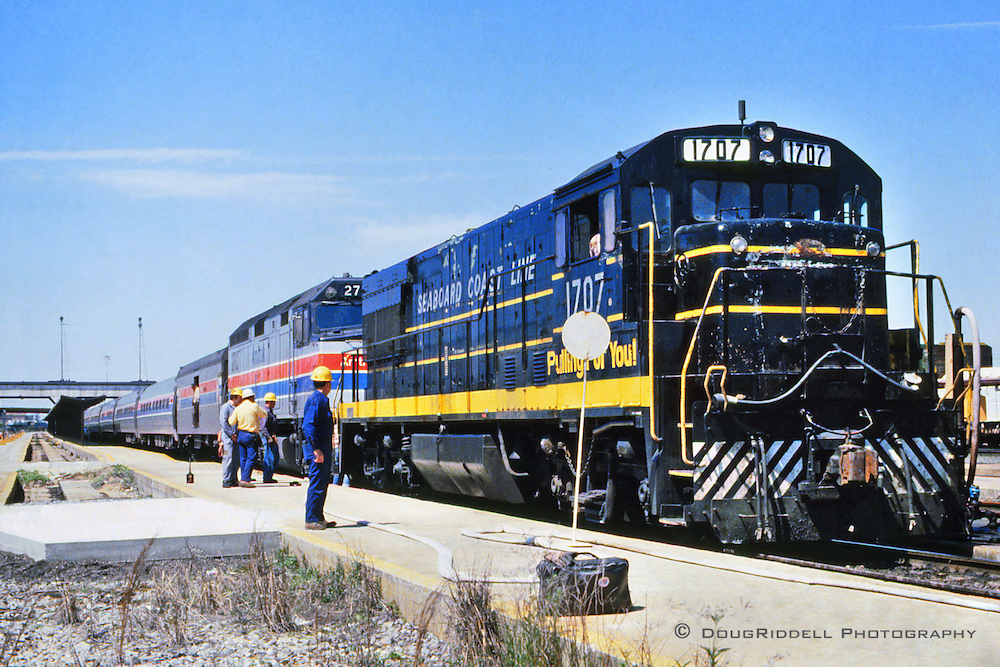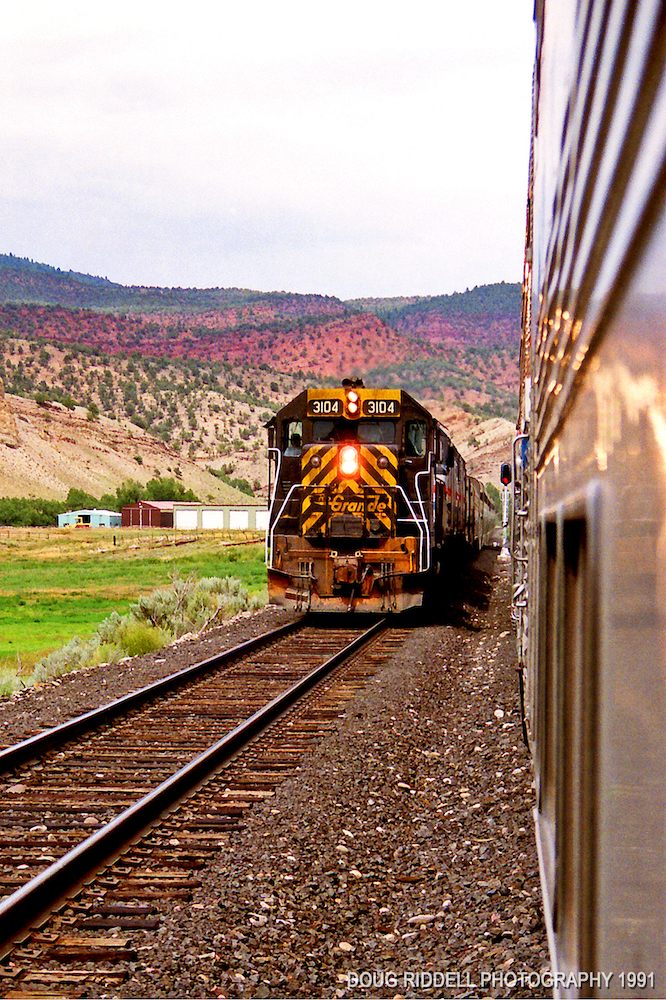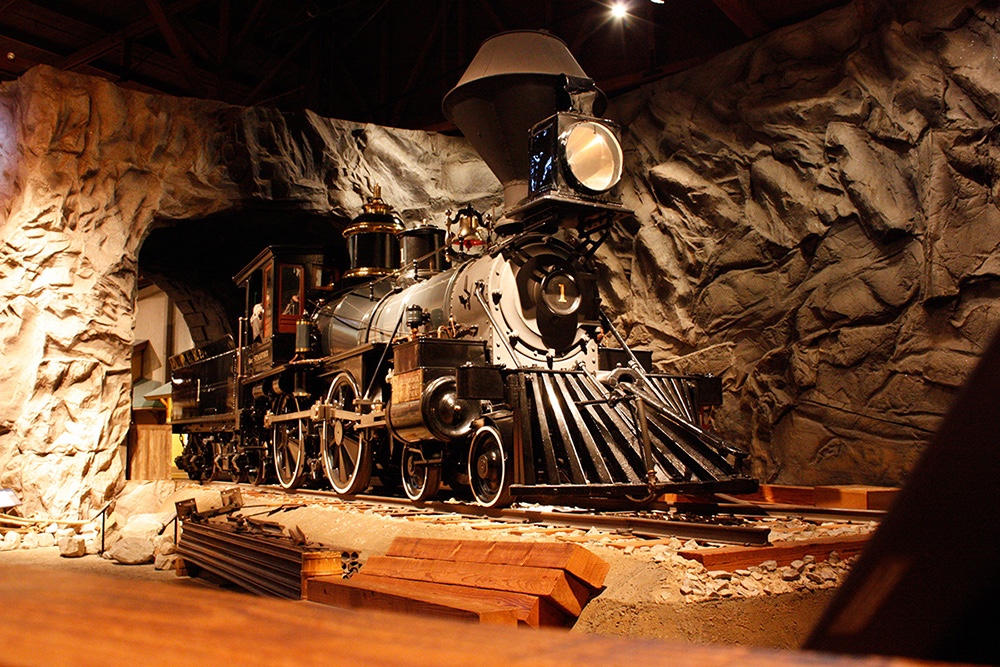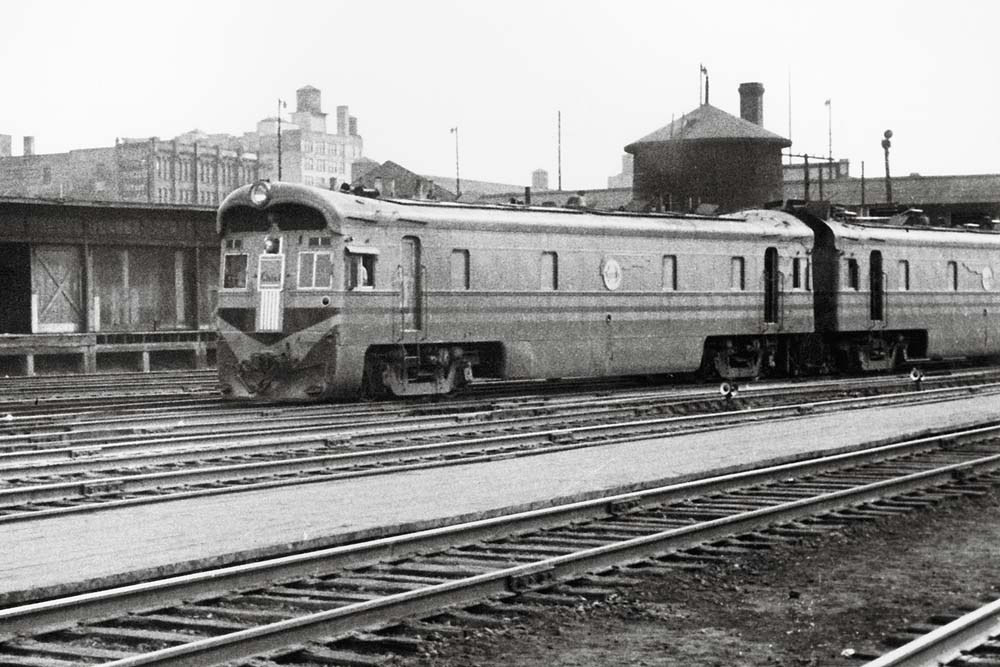
Freight locomotives on passenger trains can happen for a variety of reasons and make for memorable images. Early in Amtrak’s history, locomotives painted in the colors of freight-hauling railroads were common. In Amtrak’s “rainbow era” days, 50 years ago, the then-new National Railroad Passenger Corporation operated with leased or hand-me-down equipment, inherited from — and still painted in — a wild array of original owners’ hues.
Compared to those colorful days, today’s Amtrak is pretty much pure vanilla except for one of the railroad’s heritage or special promotion locomotives or train sets wrapped to serve as rolling billboards on the electrified Northeast Corridor.
When it comes to marketing and corporate identity, vanilla is good. Occasionally, though, Amtrak needs to call on one of its host railroads to supply a freight locomotive to rescue one of its trains. This can happen because the assigned power has been damaged in a grade-crossing accident or, and more and more frequently, because of age-related mechanical failures among Amtrak’s General Electric P40 and P42 fleet. Whatever the cause, borrowed freight power gives trackside photographers a chance at social media bragging rights with a post featuring an Amtrak train with oddball locomotive on the front.
Borrowed freight power isn’t a recent development. Even back in the “rainbow era,” when new Electro-Motive Division SDP40Fs were hauling steam-heated Amtrak trains, it wasn’t unusual to see a Chesapeake & Ohio GP7 or Santa Fe SD45 pulling at the drawbar. The only changes, as Amtrak celebrates its 52nd year of existence, are the horsepower and the road markings of the stand-in power.

On a vacation trip to the West Coast in 1991, I was lucky to photograph the westbound California Zephyr, meeting its eastbound counterpart near Glenwood, Colo. Denver & Rio Grande Western’s policy then was to add one of its own locomotives on the head whenever one of its office cars brought up the markers of a passenger train to prevent any possible delays caused by the extra car. With D&RGW adorning both ends, the passing Zephyr was spectacular sight against the craggy peaks of the Rockies.
As an Amtrak engineer, I worked primarily on former Richmond, Fredericksburg & Potomac, Seaboard Coast Line, Chessie, and Norfolk Southern Amtrak routes. The “pinch hitter” freight units I occasionally operated were captive to their home territory (and had to be returned to the point at which they were added).
When duty called, the SCL always seemed to have a lower-numbered GE U30B of Seaboard Air Line lineage to aid an ailing Silver Star or Silver Meteor. These units were cleared for 75 mph and ex-Seaboard hoggers like me unapologetically pushed those locomotives to the passenger speed maximum —and then some — to make up lost time. By comparison, SCL’s EMD freight units were geared for 65 mph and its other GEs were limited to 70.
At Richmond, Va., northbound Amtrak trains with borrowed SCL freight locomotives were obliged to trade them in for RF&P EMD GP35s or GP40s due to the necessity to employ the road’s unique cab signals and train control on the final leg to Washington Union Station.
These days though, positive train control (PTC) is universal, as are builders and models, so there is much more flexibility when Amtrak needs to borrow a freight locomotive.
The occasional appearance of borrowed power adds interest to day-to-day Amtrak operations, so keep your camera handy. As my rail photographer mentor, the late Wiley M. Bryan, used to say, “Take pictures of everything, no matter how ordinary, because today’s throwaway shots are tomorrow’s treasures.”














This is one of the most concrete examples of true fraternal solidarity in the railroad world.
Dr. Güntürk Üstün
Commuter rail operations on the Boston and Maine relied on Budd RDCs through the early 70s. During and after heavy winter snows It was commonplace to see RS-3s and GP-7s on the head end to haul the “Buddliners”.